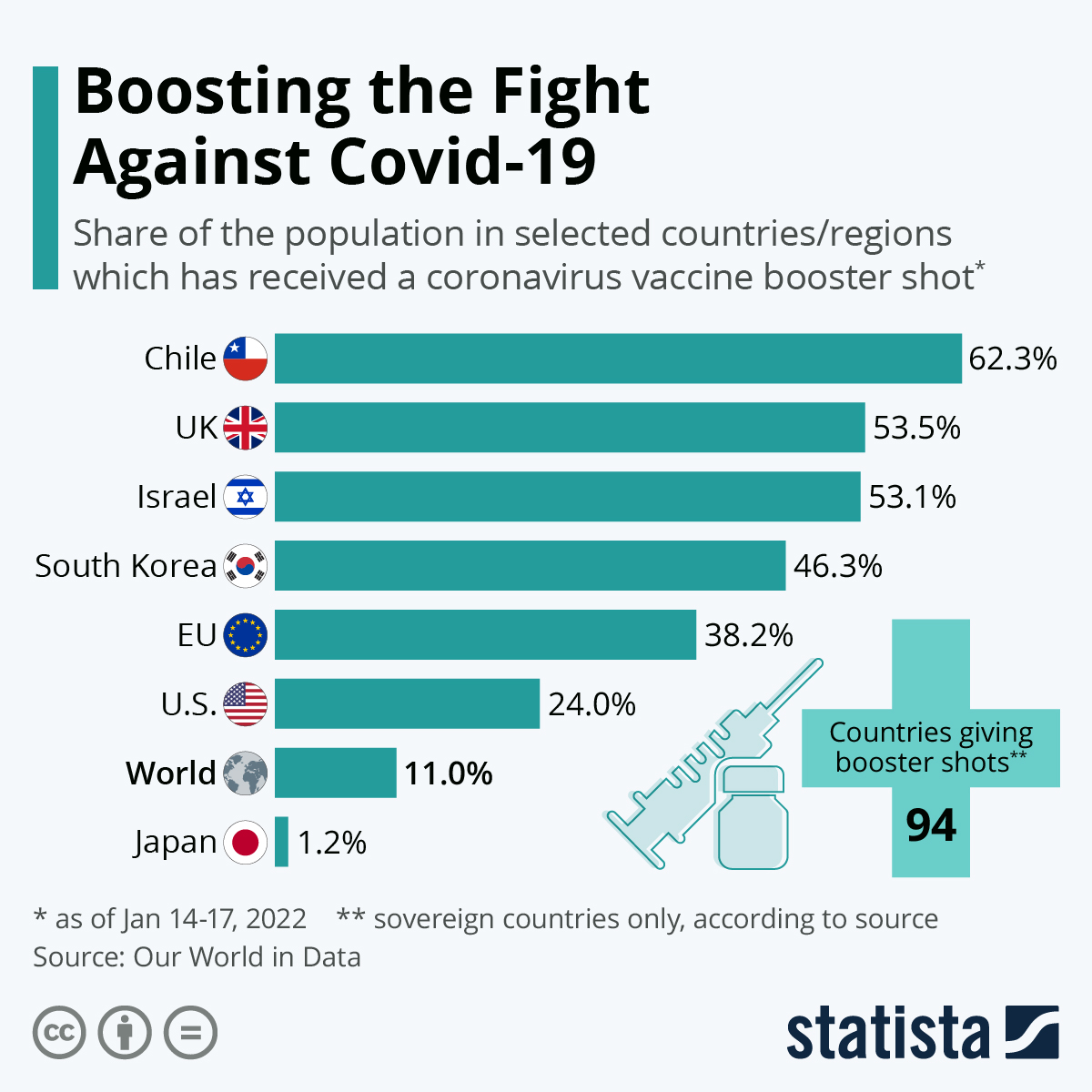India was the latest country to start giving out booster shots of the coronavirus vaccine to its citizens last week, starting with priority groups including health care workers and those over the age of 60, thereby raising the number of countries employing vaccine boosters to 94.
While many European nations have pivoted to the use of mRNA-vaccines like Pfizer and Moderna for booster shots, India is sticking to an identical third dose of its Covishield variety, a locally produced jab based of the AstraZeneca vaccine. The country of 1.4 billion people is a relative latecomer in starting booster shots, or precaution doses as they have been dubbed by the government. Many countries have been rushing to get booster shots into arms as the Omicron variant has pushed infection numbers to unprecedented levels in many countries.
Despite Israel having been the first country to offer booster shots (and also the fastest country to roll out the initial vaccination campaign), the vaccine pioneer has been overtaken in terms of the share of the boosted population by Chile, where most recently more than 62 percent of the population had received a booster vaccine.
The UK is also ahead in the booster game, while the European Union and the United States lag behind. Individual EU countries like Denmark, Ireland, Belgium, Germany, Austria and Italy managed to exceed 40 percent of booster shots among the population, however. Two countries which started out slow in the first vaccination campaign - Japan and South Korea - are now following diverging paths, with Korea advancing fast and Japan barely getting started on booster shots.












